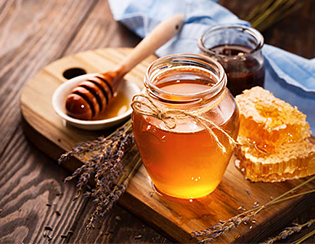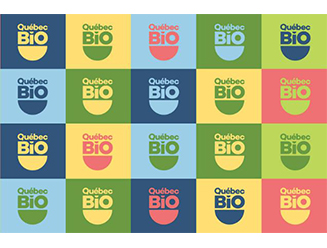The history of honey
The term “honey”, which appeared in the language in the 10th century, comes from the Latin mel. Honey is one of those foods that you can’t imagine always existed. Long before humans mastered making tools or building beehives, they collected honey in nature, usually in hollow trunks, but also under mossy rocks, or even in small pits dug out of the ground. ground. This food has accompanied the oldest civilizations in their evolution and, at all times, it has been associated with a rich symbolism, including that of being the substance of the gods. Sumerians and Babylonians used it in their religious rituals, while the Egyptians embalmed their dead. For the Hebrews, the Promised Land was where milk and honey flowed.
The bee, which appeared on Earth 80 million years ago, was just as revered as the honey it makes: “messenger of the gods”, “sidekick of the Great Goddess”, “insect that rubs shoulders with God” , “Sunlight”, no qualifier was excessive to describe this insect which belongs to the apidae family and whose most common species in beekeeping is Apis mellifera, for which four main races and many local ecotypes are known.
However, the honey bee is not the only one to produce honey. In America, before its introduction by European settlers in the 17th century, the Indians of South America bred for this purpose the little meliponis (Meliponis spp.), Which is characterized by its lack of stinger and by the special flavor of its honey .
Honey is a sweet substance made by bees from the nectar of flowers. Composed of more than 80% carbohydrates, it is a food rich in energy and relatively pure. In fact, there are mainly two sugars: fructose and glucose, two simple sugars which do not require digestion before absorption and which are easily and directly assimilated by the body.
Characteristics of honey:
- Rich in calories;
- Rich in carbohydrates;
- Source of potassium;
- Prebiotic effect;
- Rich in antioxidants.
4 benefits of honey: why eat it?
1. Prebiotics are carbohydrates that cannot be assimilated by our body which play a role in the balance of the intestinal microflora. Honey is believed to have a prebiotic effect on the human body by improving the growth, activity and viability of bifidobacteria and lactobacilli in the intestinal microflora, bacteria important for good health.
2. Honey is a dietary source of antioxidants. The majority of these antioxidants are flavonoids. These interact to neutralize free radicals in the body, thus preventing the onset of cardiovascular diseases, certain cancers and certain neurodegenerative diseases. The amount and type of flavonoids found in honey vary depending on the flower source. As a general rule, darker honeys, such as those made from sunflower and buckwheat, contain higher amounts of flavonoids than paler honeys4, as well as greater antioxidant capacity. Moreover, for the same amount, honey has an antioxidant power equivalent to that of most fruits and vegetables. On the other hand, it is rare that we consume the same amount of vegetables / fruits and honey. However, the assimilation of these flavonoids by the human body having been very little studied further research is needed.
3. Certain characteristics of honey such as its low pH, its high viscosity which limits the dissolution of oxygen and its low protein concentration give it a significant antibacterial effect. Moreover, the possibility of preventing and treating certain minor gastrointestinal conditions such as inflammation or a gastric ulcer by oral administration of honey is not excluded. Indeed, the latter would decrease the adhesion of bacterial cells to the epithelial cells of the intestine, which would prevent bacteria from attaching and proliferating, in addition to taking advantage of its anti-inflammatory properties.
4. Honey contains approximately the same amount of sugar or calories as the other sweetening agents (white sugar, brown sugar, maple syrup) but due to its higher sweetening power, it is an interesting choice because it is consumed in quantity. Also, since it has a lower glycemic index, it remains a smarter choice for people with diabetes.
CHOOSE YOUR HONEY
In many countries, the name “honey” is regulated: it is an entirely natural food, to which nothing should be added, no additives, no preservatives, no syrup, etc. In Canada, the label must bear the name of the country of production, the grade (Canada No. 1, 2 or 3) and the floral origin (clover, wild flowers, buckwheat, etc.).
Note: Crystallization of honey is not an indication of spoilage. Many factors can cause this phenomenon. To restore its fluidity, it suffices to heat it over a low heat, which will have the effect of “melting” the crystals.
KEEP WELL
At room temperature: 18 ° C to 24 ° C, a year or two. Honey can be kept at higher temperatures for short periods of time, but in case of prolonged heat it is best to put it in the refrigerator. In particular, avoid keeping it near a source of heat and ensure that the container is always tightly closed.
In the refrigerator: Unpasteurized honey should be stored at around 10 ° C, or even in the refrigerator, as it is more likely to ferment.
CONTRAINDICATIONS
RISK OF CHILD BOTULISM
Honey is the only known food in Canada that may be the source of infant botulism. Infant botulism is a rare disease caused by the ingestion of spores from Clostridium botulinum bacteria. Because the gut microbial flora of a child under one year of age is immature, it does not allow them to digest these spores quickly enough to prevent their germination. This germination in the intestine allows the production of a neurotoxin that causes various symptoms that can lead to the death of the child. Clostridium botulinum spores are likely carried by bees that come in contact with them in air, dust and soil. Unfortunately, the pasteurization treatment applied to honey does not allow their destruction and therefore does not prevent cases of infant botulism. Therefore, Health Canada recommends not to give honey to infants under one year of age.
IF YOU WANT TO GO FURTHER
ECOLOGY AND ENVIRONMENT
Einstein is credited with the following sentence: “If the bees were to disappear from the face of the earth, mankind would only have a few years to live. ”
Besides the honey they produce, bees play an important role in agriculture as they are essential for the pollination of many plants with which they have evolved over the millennia. Lemons, oranges, almonds, apples, zucchini, cucumbers, melons, watermelons wouldn’t exist without them. As a rough guide, their estimated contribution to US GDP is $ 15 billion, with honey only a tiny fraction of that amount. However, these indispensable insects that once were seen everywhere – in pastures, forests, gardens – are increasingly rare. So much so that producers now have to pay for the services of a beekeeper, who will sometimes come from far away, to ensure the pollination of their crops.
This is the case in California, which accounts for two-thirds of world almond production, and where bees are dying en masse, victims among other things of varroa mite, a mite that feeds on their blood. This parasite is believed to be the leading killer of Apis mellifera worldwide. Native to Southeast Asia, it did not appear in the United States until 1987, and until recently, its proliferation was limited by pesticides. Unfortunately, he has developed resistance to the two main pesticides allowed on the market. During the almond blooming season, California must therefore import beehives from Florida at high prices.
In Europe, the varroa mite, which arrived in 1982, appears to be under control. French specialists who are following the evolution of the American epidemic are wondering whether the difficulties in this country are not primarily due to the lack of genetic diversity in their herd. “By subjecting bee imports to very strict conditions,” writes an INRA researcher, “by pushing selection very far, they are depriving themselves of a biodiversity which would nevertheless promote resistance to parasites, because increasing diversity, c t is to increase the probability of finding a genetic mixture capable of allowing the bee to adapt. ”
Moreover, in many countries around the world, beekeepers are rediscovering their local bees, whose ecotypes are highly diverse. Often more resistant to disease than imported bees, they are also better adapted to the climatic conditions of the region, be it drought, cold, humidity, etc. Their only flaw is that they are generally less productive, so their honey commands a higher price.
Retrieved (and translated freely) from https://www.passeportsante.net/fr/Nutrition/EncyclopedieAliments/Fiche.aspx?doc=miel_n





